2037
Plant Select® 2009
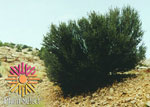 Littleleaf mountain mahogany (Cercocarpus intricatus) is a dense twiggy evergreen shrub from the Southwest desert that can tolerate many of the extremes conditions of the region, especially hot, dry situations. A perfect choice for small to mid-sized yards, it grows to 3 to 6 feet tall and 2 to 3 feet wide. The small, inconspicuous flowers transform into attractive, feathery seed pods by mid-summer. It can be used in the landscape as a fine-textured, small-scale hedge plant or as a specimen in the Xeriscape.
Littleleaf mountain mahogany (Cercocarpus intricatus) is a dense twiggy evergreen shrub from the Southwest desert that can tolerate many of the extremes conditions of the region, especially hot, dry situations. A perfect choice for small to mid-sized yards, it grows to 3 to 6 feet tall and 2 to 3 feet wide. The small, inconspicuous flowers transform into attractive, feathery seed pods by mid-summer. It can be used in the landscape as a fine-textured, small-scale hedge plant or as a specimen in the Xeriscape.
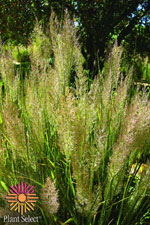
Korean feather reed grass (Calamagrostis brachytricha) is an elegant clump-forming grass that offers a beautiful alternative to the stiffer, more architectural Karl Forester grass. This graceful grass grows 24 to 40 inches tall and 15-18 inches wide, preferring locations with sun to partial shade, and moderately moist to dry soil. The attractive feathery flowers persist from summer through fall and into winter, offering year round interest to a variety of situations.
LAVENDER ICE™ ice plant (Delosperma ‘Psfave’) offers a new color in hardy ice plants with its iridescent lavender flowers and dark eyes, blooming nearly all summer long. 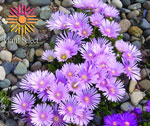 This striking sport of TABLE MOUNTAIN® ice plant occurred at Perennial Favorites nursery in Rye, Colorado. It prefers full sun to partial shade and moderate to dry soil, and grows to about 2 to 3 inches tall and 12 to 24 inches wide. The green foliage turns purplish in the winter.
This striking sport of TABLE MOUNTAIN® ice plant occurred at Perennial Favorites nursery in Rye, Colorado. It prefers full sun to partial shade and moderate to dry soil, and grows to about 2 to 3 inches tall and 12 to 24 inches wide. The green foliage turns purplish in the winter.
Silverheels horehound (Marrubium rotundifolium) is a vigorous mat-forming ground cover with rounded, fuzzy leaves fringed with a beautiful silver lining that encircles each leaf. This native plant from Turkey thrives in moderate to dry soils, growing to just 2 to 4 inches tall and 24 to 36  inches wide in full sun in a wide range of soil types. The name,” Silverheels” comes from the nickname of a mysterious dance hall girl who wore shoes with silver heels in a Colorado mining town in the 1860’s. She ultimately earned the admiration of local miners while nursing them back to health during a deadly smallpox epidemic.
inches wide in full sun in a wide range of soil types. The name,” Silverheels” comes from the nickname of a mysterious dance hall girl who wore shoes with silver heels in a Colorado mining town in the 1860’s. She ultimately earned the admiration of local miners while nursing them back to health during a deadly smallpox epidemic.
CORONADO® Red hyssop (Agastache ‘Pstessene’) is a new selection of hyssop with brilliant crimson and maroon spires from July to September.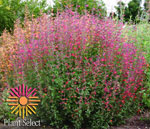 It came to Plant Select® from Welby gardens in Denver. This new cultivar brings a unique and exciting color offering of our native mints. The plant prefers full sun and is quite adaptable to most moderate to dry soils. It’s a little smaller in height and width (15 to 18 inches tall and 12 to 15 inches wide) than many of the other agastaches. This is a magnificent addition to gardens designed to attract hummingbirds and other beneficial pollinators.
It came to Plant Select® from Welby gardens in Denver. This new cultivar brings a unique and exciting color offering of our native mints. The plant prefers full sun and is quite adaptable to most moderate to dry soils. It’s a little smaller in height and width (15 to 18 inches tall and 12 to 15 inches wide) than many of the other agastaches. This is a magnificent addition to gardens designed to attract hummingbirds and other beneficial pollinators.
DENVER DAISY™ Rudbeckia (Rudbeckia) is a new introduction honoring Denver’s 150th anniversary. This tender perennial has flowers with a striking dark eye and long-rayed yellow petals. It blooms from May through early fall, growing to 18 to 28 inches tall and 10 to 25 inches wide. DENVER DAISY™ was hybridized by Benary Seed Company from the Colorado native Black-Eyed Susan (Rudbeckia hirta). Requiring moderate to dry conditions, these stunning flowers perform best in full sun to partial shade in a moderate soils.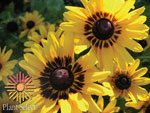
Durable Plants for the garden – A Plant Select® Guide, was released in early January 2009, and is published by Fulcrum Publishing, Golden, Colorado. This compendium of the program’s history is stunningly illustrated and contains colorful and descriptive portraits of the first ten years’ plant selections, helpful tables, and additional references. It is a valuable resource to gardeners throughout the region and beyond.
Plant Select® introductions and recommendations are available at garden centers and nurseries. Additional information on the cultural needs of these and other plants in the program is available at the Plant Select® website, www.plantselect.org.



